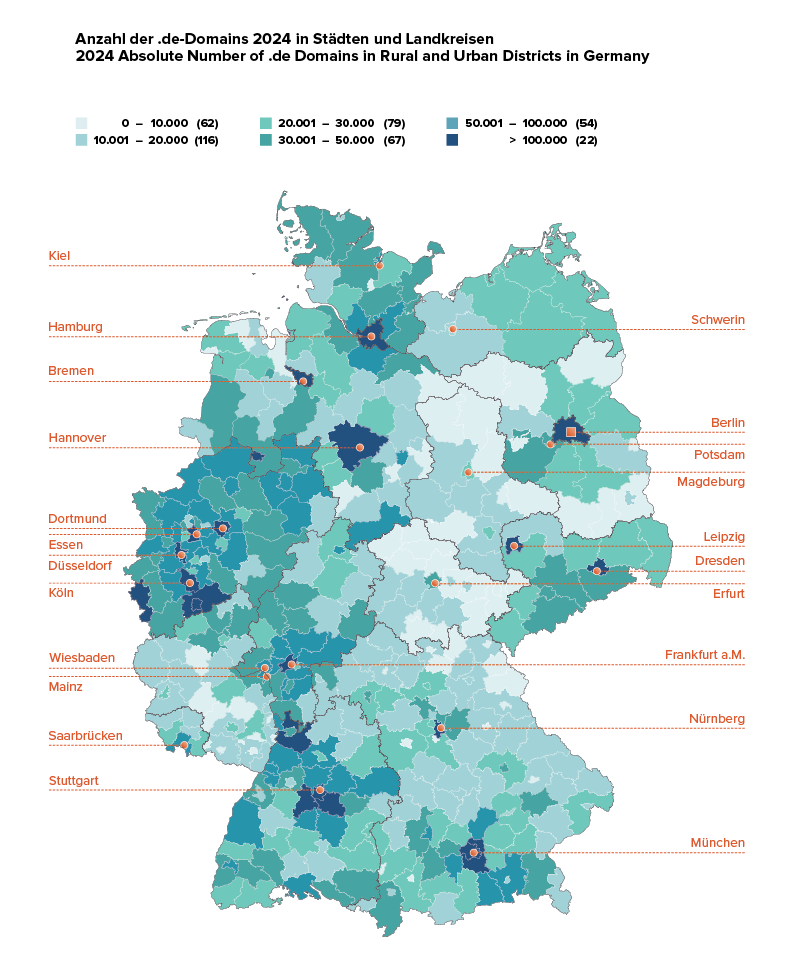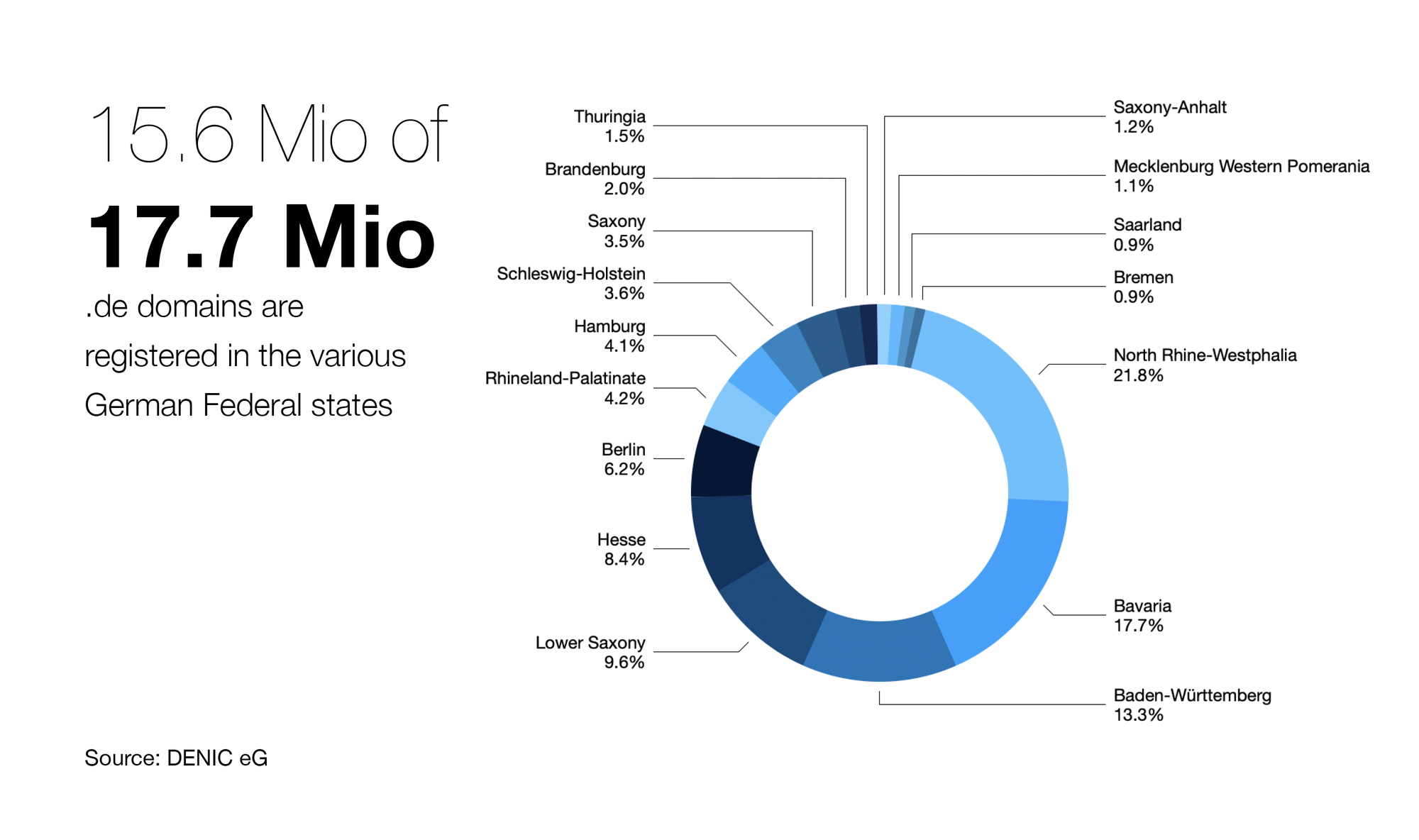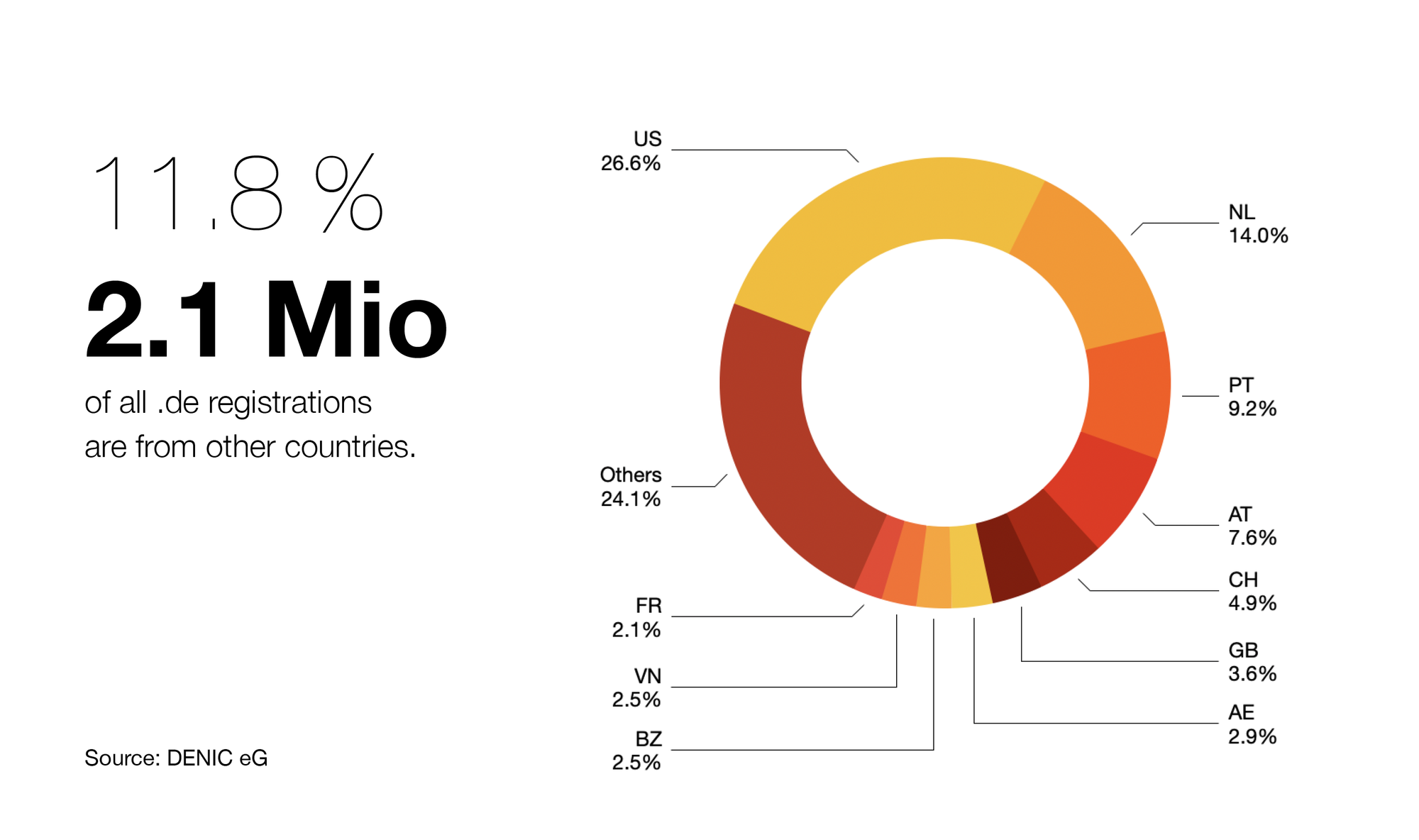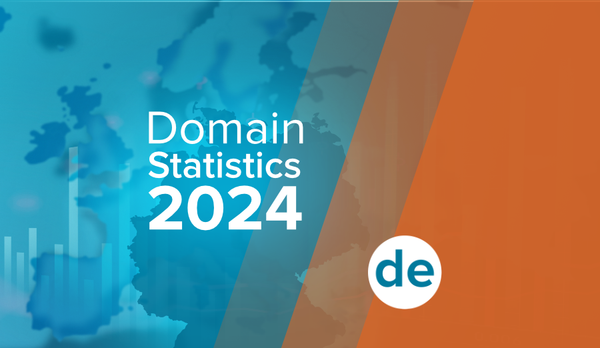Regional distribution of .de in Germany – Interactive domain maps and dynamic tables
Positive development for .de overall – foreign domain holders are growth drivers
Contrary to the international trend, the German country code .de continued to grow slightly in 2024. At the end of the year, around 17.7 million .de domains were registered worldwide. DENIC eG's domain statistics provide annual information on the exact geographical distribution within Germany. The central registry for all domains with the national code has published its analysis for 2024.
As of 31 December 2024, 15.6 million domains were registered in Germany's 400 cities and districts. In addition, there are approximately 2.1 million registrations by owners residing abroad. At the end of 2024, a total of 17,661,679 domains were registered with DENIC. Statistically speaking, one in five residents of the Federal Republic of Germany has a .de domain.
Regional comparison – Hamburg and Lower Saxony come out on top
At the national level, six of the federal states reported growth, with Hamburg and Lower Saxony performing particularly well. North Rhine-Westphalia remains the leader with 3.4 million domains. Of the 400 cities and districts evaluated, 192 ended the year with a healthy increase.

City comparison: Berlin remains No. 1
In terms of absolute domain numbers, the major cities continue to dominate. With 961,679 .de domains, Berlin remains clearly ahead of Hamburg, which recorded an increase of over 2 per cent (630,809), and Munich (538,351), followed by Cologne with 369,777 domains.
The top rankings are also largely unchanged in terms of population: Osnabrück ranks first among cities with 1,877 .de domains per 1,000 inhabitants, ahead of Munich and Frankfurt, each with 356 domains.
Municipal level: Miesbach ahead of Starnberg
The Free State of Bavaria once again ranks first among the districts with the highest domain density per capita. With 629 .de domains, Miesbach remains ahead of Starnberg (507) and Freising (395).
The national average is 184 .de domains per one thousand inhabitants (individual statistical outliers may be due to local domain investors with larger domain portfolios).
Federal states: rankings remain unchanged
Continuity also characterises the rankings of the federal states in terms of domain distribution per capita in 2024. Hamburg remains well ahead of Berlin (254) with 330 domains per 1,000 inhabitants. Bavaria follows with 205 and Hesse with 203. Mecklenburg-Western Pomerania (110), Thuringia (109) and Saxony-Anhalt (87) continue to occupy the bottom positions.

National growth has slowed slightly after the strong increases seen during the coronavirus years, standing at 15,551,210 in 2024, compared with 15,568,087 registered across Germany in the previous year. Lower Saxony and Hamburg saw the strongest growth, both at +2.1%, followed by Thuringia (+0.6%) and Bavaria (+0.5%). Overall, six federal states recorded growth.
The average percentage change in 2024 in the eastern federal states (-0.34%) is higher than in the western federal states (-0.02%). Lower Saxony is the federal state with the highest absolute growth in 2024 (31,029), followed by Bavaria (13,558) and Hamburg (12,909).
Growth abroad: More than 2.1 million domains registered from outside Germany
Year-on-year, the total number of domains with foreign domain holders rose by 3 percent in 2023/24, corresponding to growth of 61,750 .de domains. At the end of the year, a total of 11.8 percent of domains were registered to foreign holders, who were the overall drivers of growth.

The foreign owners of .de domains come from all over the world. German domains continue to be most in demand in the USA (27%) and the Netherlands (14%). They are followed by Portugal (9%), Austria (8%) and Switzerland (5%). .de remains particularly popular in the EU.
Detailed data available online
Interactive domain maps and dynamic tables for all 400 cities and counties, as well as extensive data and graphics, are available in the statistics section of the DENIC website. In addition to absolute values, relative data on the domain/population ratio, maps and diagrams on the absolute and relative distribution of domestic domains, as well as domain owners residing outside Germany, are also available.















